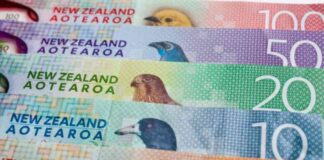In this series, we delve into quantifying episodes of soft-landings, stagflation, and recessions in the post-1950 period to provide insights into the potential drivers of monetary policy stances. By understanding these economic regimes, policymakers can make informed decisions to navigate through various economic scenarios effectively.
Quantifying Episodes of Soft-Landings and Stagflation
One of the key highlights of our analysis is the development of a framework to quantify periods of soft-landing for the U.S. economy. This framework allows us to identify trend-like growth periods that are crucial for policymakers to consider when formulating monetary policy. We estimate that there have been 13 episodes of soft-landings and 13 episodes of stagflation in the post-1950 era, shedding light on the historical trends of economic performance.
Moreover, our analysis incorporates data from the National Bureau of Economic Research (NBER), which indicates that there have been 11 recessions during the same period. By examining these historical episodes, we can build a framework to generate probabilities of different economic scenarios occurring in the near term. This information is valuable for policymakers to gauge the potential path of monetary policy in response to changing economic conditions.
Understanding Soft-Landings: A New Approach
To quantify episodes of soft-landings, we utilize the Congressional Budget Office’s (CBO) potential real GDP series as a benchmark to identify periods of trend-like growth. By comparing actual output growth rates with CBO’s projections, we can determine whether the economy is experiencing a soft-landing phase. This approach provides a nuanced understanding of economic performance and helps in predicting potential policy responses.
Our analysis employs a time-varying approach to capture the evolving nature of the economy. By dividing expansion periods into episodes of weak or strong soft-landings based on historical data, we can assess the magnitude and duration of each economic phase. This information is crucial for policymakers to make data-dependent decisions and navigate through different economic scenarios effectively.
Predicting the Near-Term Policy Path
Rather than assuming past policy behaviors, we advocate for a data-driven approach to project potential growth scenarios. By incorporating NBER’s recession dates methodology and our framework of soft-landing episodes, policymakers can better assess recession risks and soft-landing scenarios. This comprehensive analysis lays the foundation for informed decision-making in response to changing economic conditions.
In the next installment of this series, we will introduce a probit framework to generate probabilities of different economic scenarios occurring in the near term. This framework will provide valuable insights for projecting the possible path of the upcoming easing cycle and guiding monetary policy decisions. By leveraging data-driven analysis, policymakers can navigate through economic challenges effectively and steer the economy towards sustainable growth.
Conclusion
In conclusion, our analysis of soft-landings, stagflation, and recessions in the post-1950 era provides valuable insights into the potential drivers of monetary policy stances. By quantifying historical episodes and developing a framework to assess economic scenarios, policymakers can make informed decisions to steer the economy towards stability and growth. Through data-driven analysis and proactive decision-making, policymakers can effectively navigate through economic challenges and ensure a resilient and sustainable economic future.

















